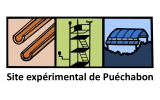Open-air Platform
Parent institution: CNRS
Active since 2003
Active through Continuous since 2003
Co-located with
- ICOS
Fields of study
- Terrestrial biology, Ecology
Contact Information
Limousin, Jean-marc
email: jean-marc.limousin@cefe.cnrs.fr

